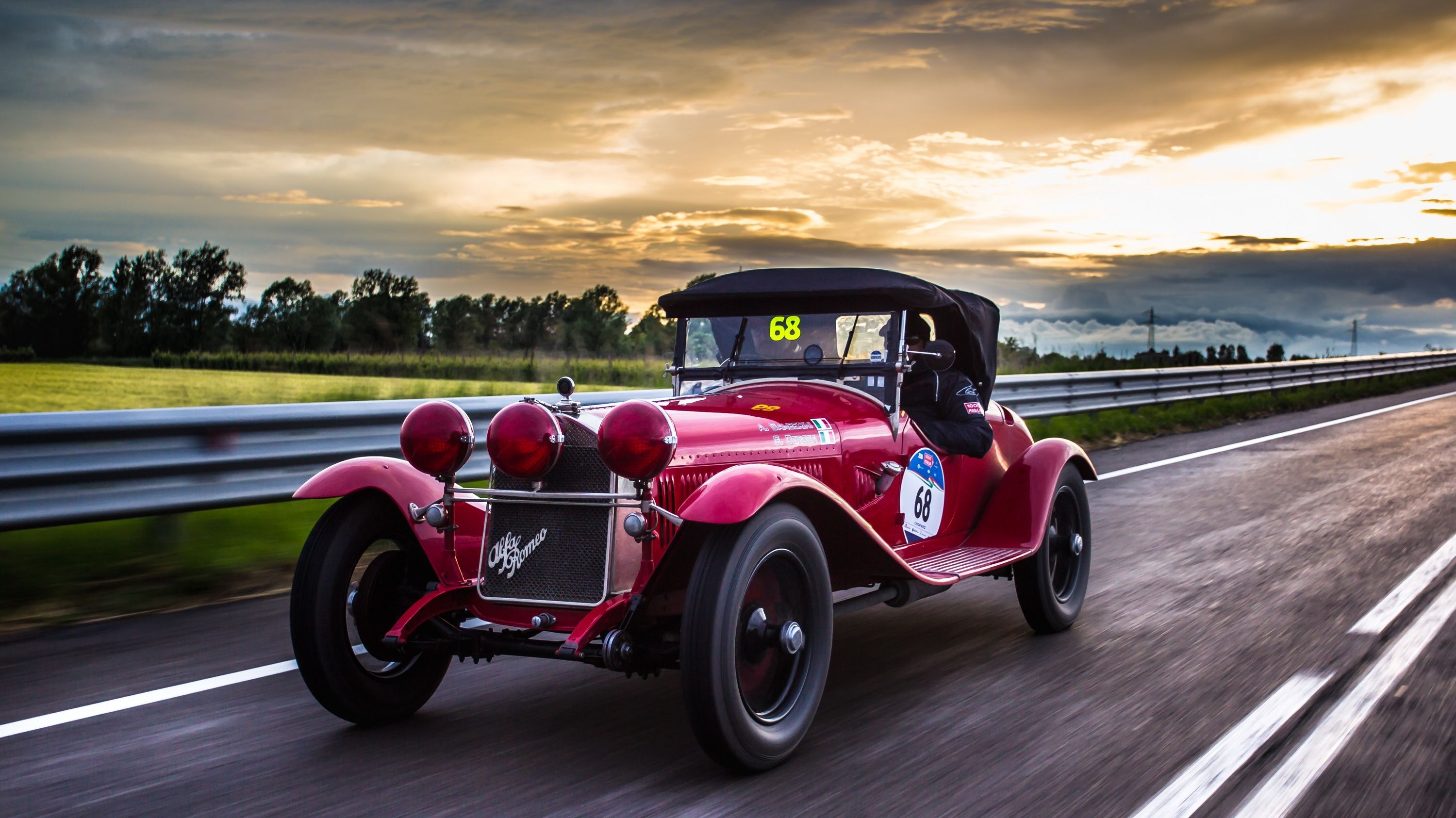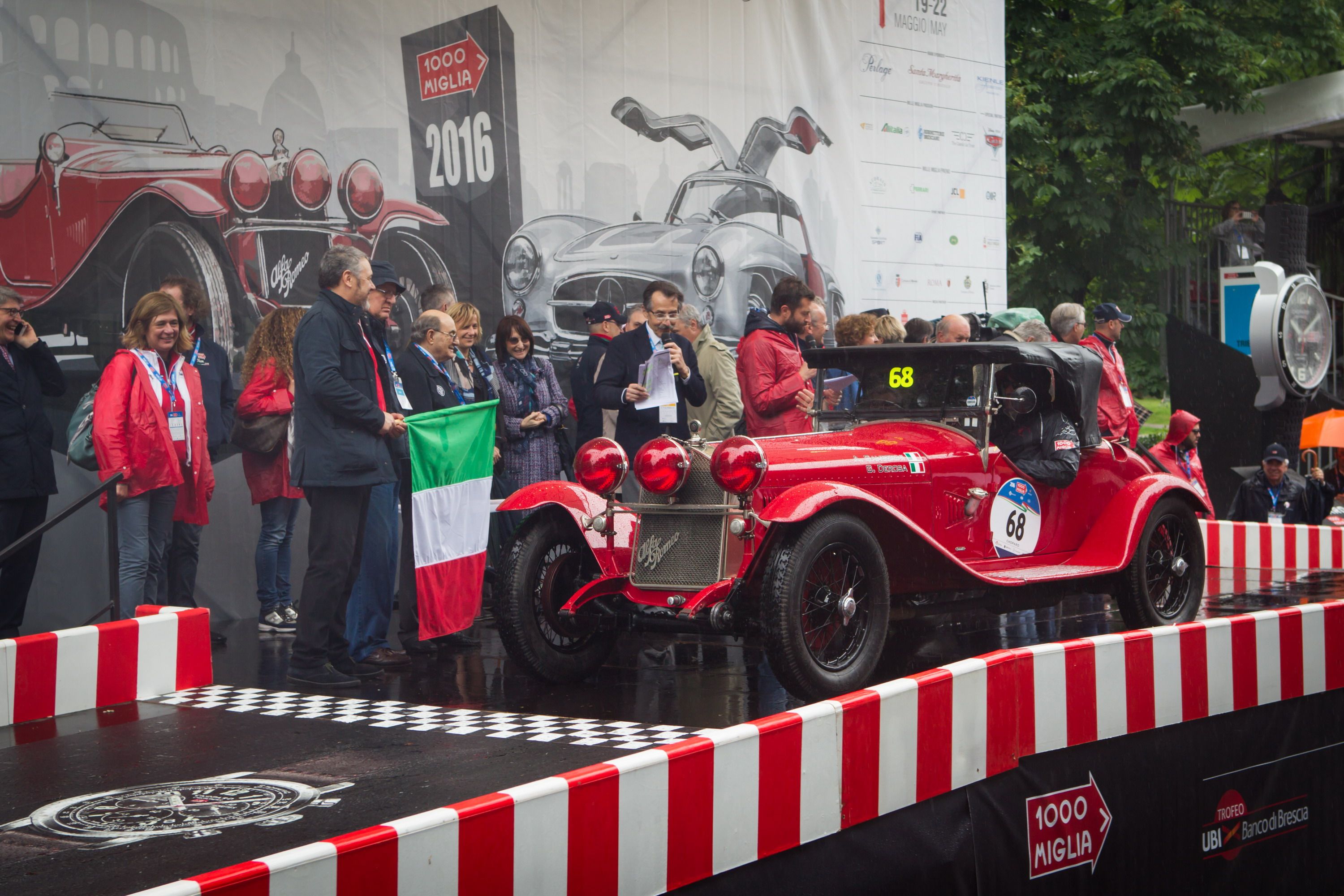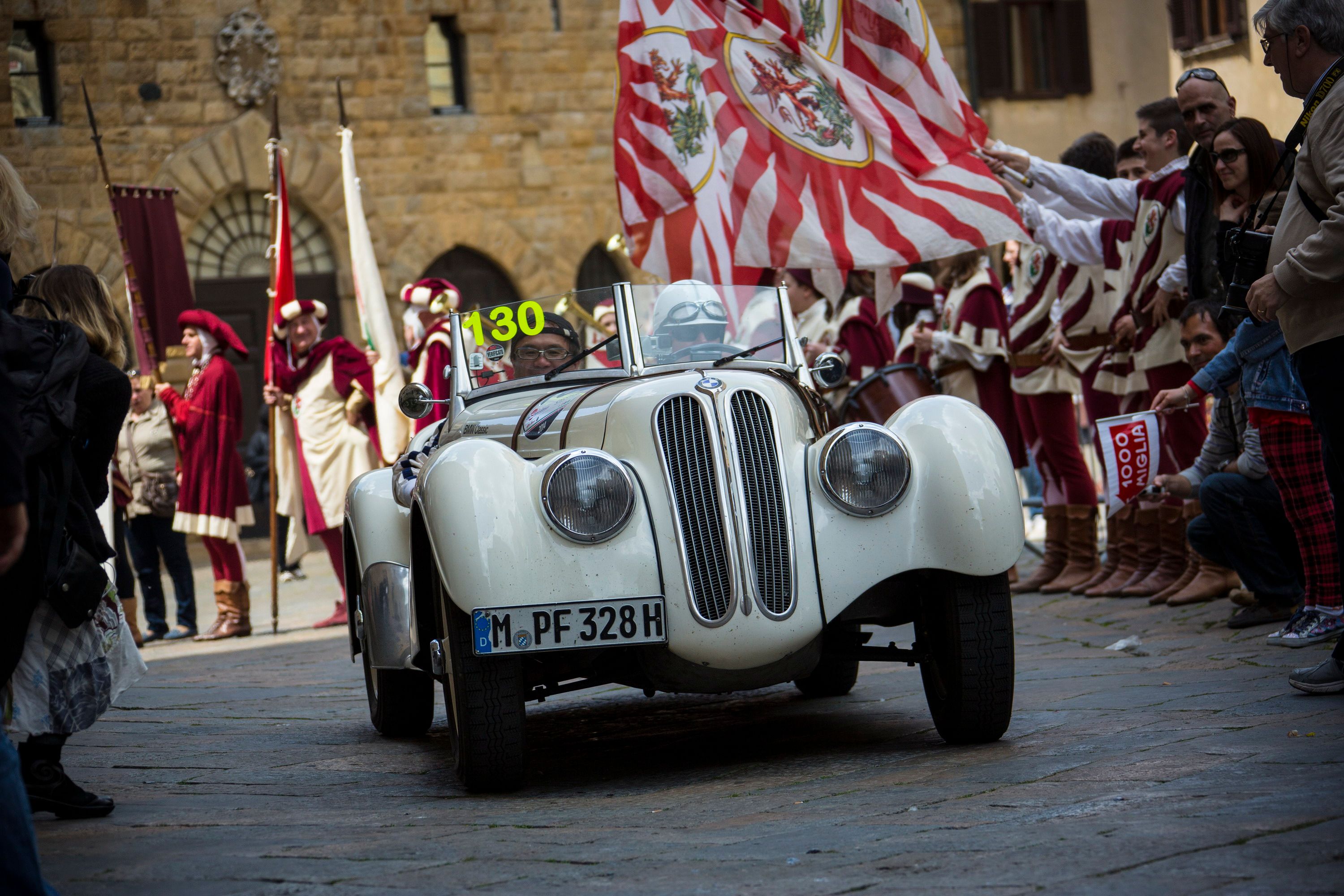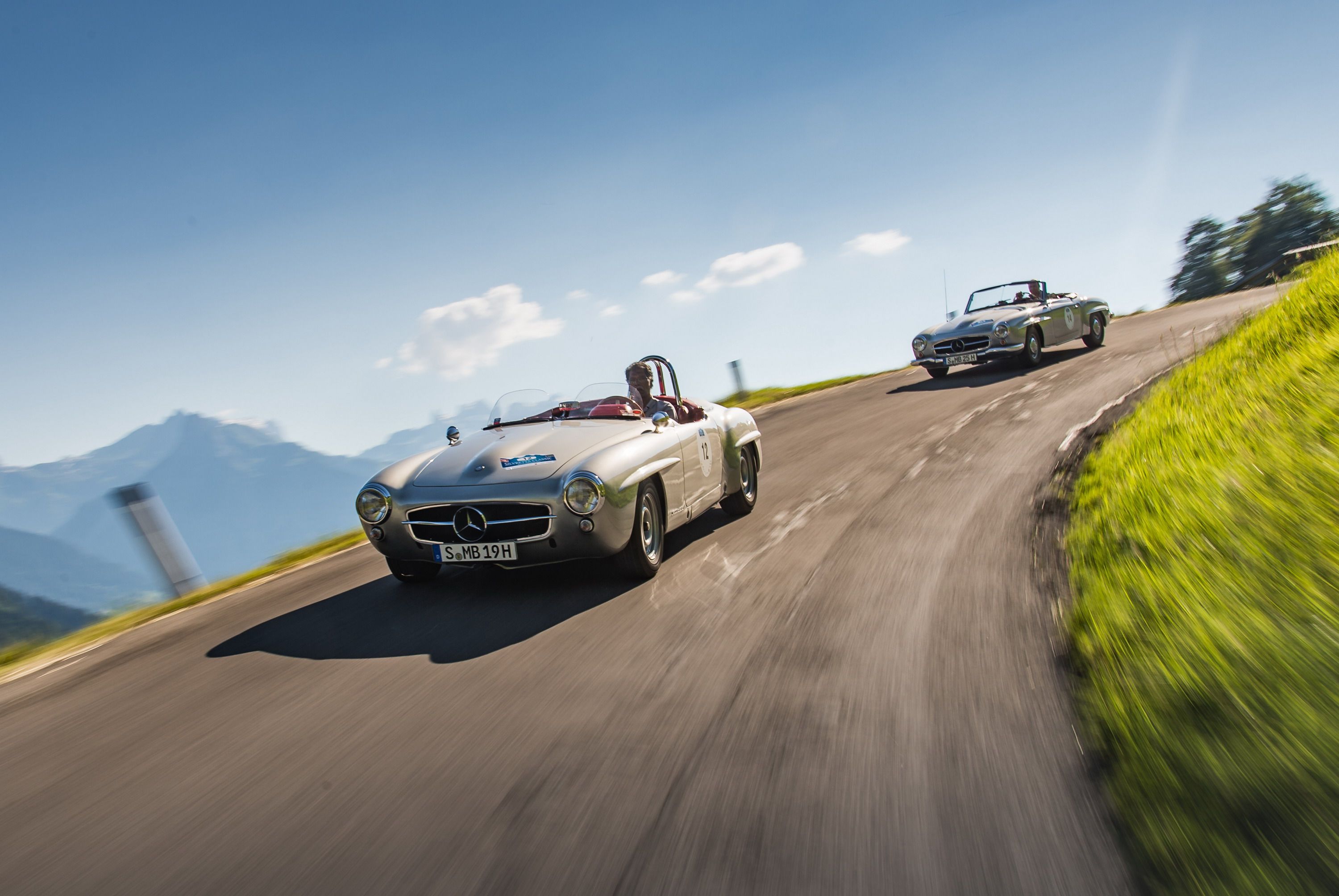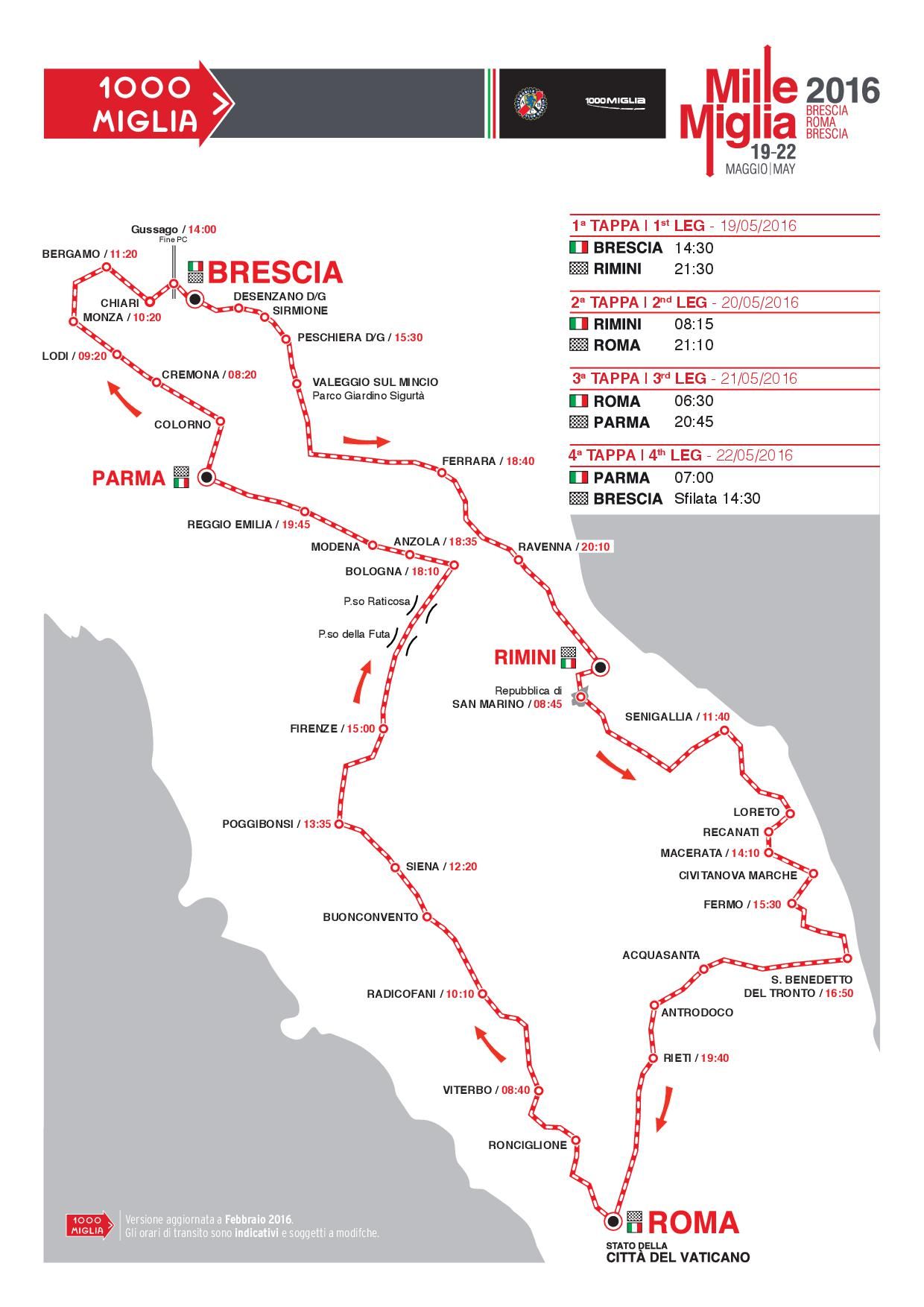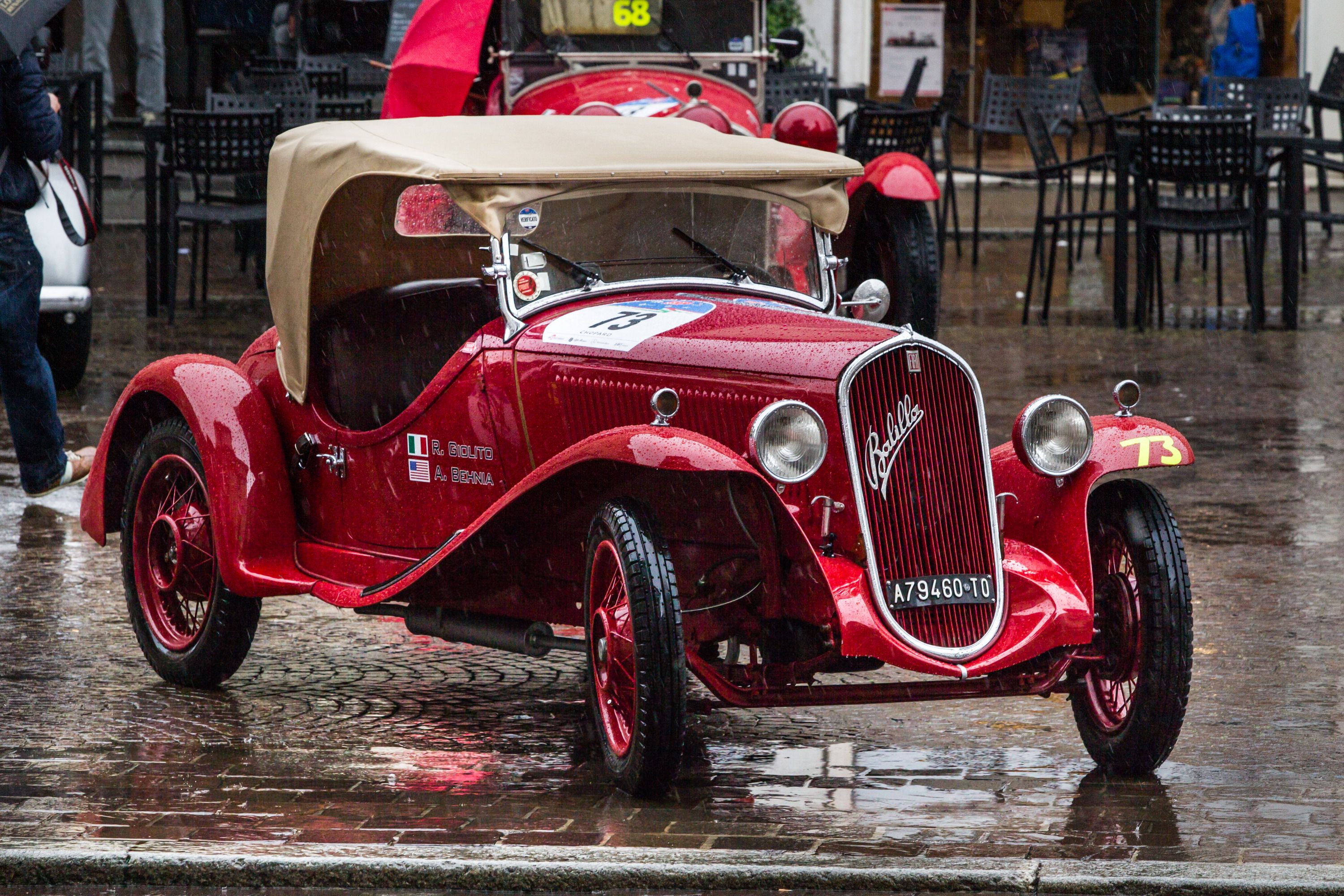This past weekend, over 400 classic high-end automobiles set off on a tour of Italy in the 34th annual Mille Miglia Storica. Held in celebration of the old endurance race of the same name, the Mille Miglia->ke2659 is one of the most prestigious gatherings of historic cars in the world, offering vintage heroes the chance to get out and stretch their legs along picturesque country roads and spectator-lined city streets.
The original Mille Miglia was held 24 times between 1927 and 1957, pitting competitors in a 1,000-mile round-trip contest between Bescia and Rome. It’s the legendary battleground where the sporting marques of Europe vied for grand touring supremacy, with names like Alberto Ascari, Juan Manuel Fangio, and Stirling Moss written into its history.
It was also exceedingly dangerous. Held on public roads, the race was banned in the late ‘50s following two fatal crashes. In total, the Mille Miglia claimed 56 lives, with both drivers and spectators counted amongst those killed.
These days, the Mille Miglia has transformed into a time-speed-distance rally, also known as a “regularity rally,” wherein participants must drive each section in a certain time at a specific average speed.
Participants typically include wealthy enthusiasts, celebrities, and models, not to mention high-profile figures from the world of racing. This year saw a record turnout, with 900 participants from 41 different countries, plus a wide variety of incredible four-wheeled idols.
We’ve got the lowdown on the cars, the route, and the results, so read on for more.
Continue reading to learn more about the 2016 Mille Miglia.
The Cars
The Mille Miglia is primarily for cars made prior to 1958, with entries requiring at least one example registered previously in the original races between 1927 and 1957. However, there are ancillary competitions that allow exceptions, such as this year’s Mercedes-Benz Mille Miglia Challenge, wherein Merc models made between 1958 and 1991 were allowed to participate.
In total, 450 cars from across 71 brands showed up at this year’s event, 415 of which were vintage vehicles (we listed the highlights below). There were also 25 “specials,” as well as 10 military vehicles piloted by members of the Italian Armed Forces.
Alfa Romeo 6C 1750 Gran Sport and 1900 Sport Spider
Alfa Romeo->ke1386 lays claim to most wins in the original Mille Miglia endurance race, with 11 victories between 1927 and 1957. As such, the Italian marque had the honor of pace setting in the new Giulia->ke3472 this year, but it also made its presence known with a variety of rare vehicles from its competition past, including the following:
1930 6C 1750 Gran Sport – in 1930, this model took victory thanks to the efforts of Tazio Nuvolari and co-pilot Giovanni Battista Guidotti, becoming the first car to average over 100 km/h (62 mph) for the entirety of the course. It’s also the model from the renowned “overtaking in the dark,” where Nuvolari tailed his teammate and rival, Achille Varzi, at speeds up to 150 km/h (93 mph) with the lights off, switching them back on near the finish in order to pass the surprised Varzi.
1954 1900 Sport Spider – Powered by a 138-horsepower twin-cam four-cylinder engine and weighing in at just 880 kg (1,940 pounds), this open-top Alfa was capable of 220 km/h (137 mph) – more than impressive for the time. Outside is slippery bodywork by Bertone. Alfa produced just two units total.
BMW 328
In 1940, BMW->ke178 took its singular victory in the Mille Miglia with a 328 Berlinetta Touring. This year, the Bavarians returned to Italy, bringing six examples of the race-winning roadster along for the ride. Power is derived from a 2.0-liter straight-six engine, which produces 79 horsepower at the rear wheels through a four-speed manual gearbox. The body is made from aluminum, and curb weight comes to 1,830 pounds.
Ferrari 340 America Berlinetta Vignale
As always, the Prancing Horse was well represented this year, with notable entries including the very same 340 America Berlinetta Vignale that took Gigi Volloresi to the top of the podium 1951. Mounted in the nose is a 4.1-liter V-12 developed for use on Formula One,->ke190 with output rated at just a few ponies shy of 200 horsepower.
Mercedes 190 SL
With confirmation of the 190 SL’s competition history in the original Mille Miglia coming as late as just last year, the roadster finally made its debut at the TSD rally for 2016. Mercedes->ke187 brought the racing version, while private parties entered four additional examples. Originally made for comfortable high-speed cruising, the 190 SL is equipped with a 1.9-liter four-cylinder engine with 105 horsepower. When new, top speed was rated at 180 km/h (112 mph).
Porsche 550 Spyder RS
Early on in the 1954 Mille Miglia race, Hans Herrmann and Herbert Linge were setting a blistering pace in their 550 Spyder. As the story goes, the duo approached a railway crossing just as the gate was lowering, signaling an oncoming train from Rome. Rather than brake, Herrmann and Linge ducked down in the cockpit, narrowly passing under the gates thanks to the 550 Spyder’s low-slung stance. With a story like that, it’s no surprise this Stuttgart special is routinely seen at the modern Mille Miglia.
The Route
The original race was a 1,600-km (994-mile) “figure-eight,” but the route has changed multiple times over the years. This year’s iteration was a bit longer at 1,718 km (1,067 miles).
As is tradition, the event was held one week before the Formula 1 Grand Prix in Monaco, from May 19th to May 22nd.
Results
Outright victory this year went to Andrea Vesco and Andrea Guerini, driving a 1931 Alfa Romeo 6C 1750 GS by Zagato.
“After placing second in the previous race, this year we succeeded in obtaining a victory,” said Vesco and Guerini. “It is the law of large numbers and it had to happen sooner or later; we were skilled and lucky, including because of the automobile , which never gave us the slightest problem. It was a phenomenal race.”
Luca Patron and Elena Scaramuzzi took second in a 1926 O.M. 665 Superba Sport 2000 CC, while Giordano Mozzi and Stefania Biacca took third in a 1933 Alfa Romeo 6C 1500 Gran Sport.
In the all-female “Special” category, Silvia Marini and Saskia Stoeckkelmann took first in a 1936 Riley 12/4 Sprite. Second went to Loes and Annemarie Van De Velve in a Lagonda M 45 Rapide, while third went to Susie Wolff and Ellen Lohr in a Mercedes 300 SL.

